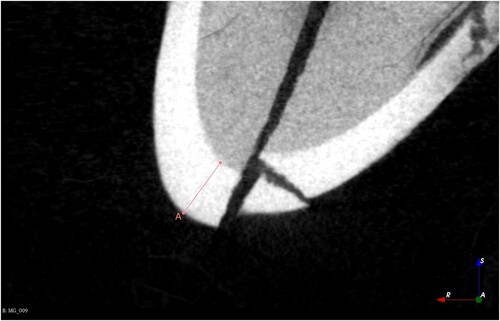Figures & data
Figure 1. Measurements for crown height on canines, shown as A) tooth width at CEJ; B) total pulp cavity width; and C) crown height.
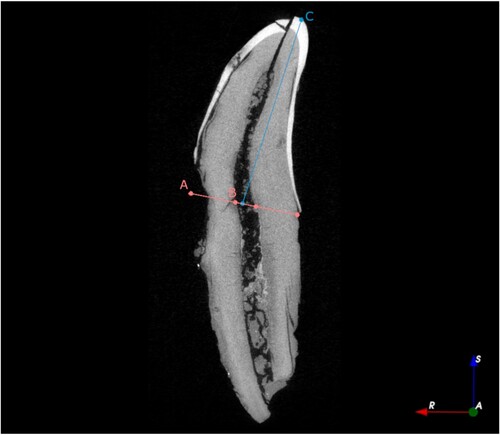
Figure 2. Measurements for pulp cavity closure ratios on mandibular M1s: A) width of the distal root; B) width of the pulp cavity for the distal root; C) width of the pulp cavity for the mesial root; D) width of the mesial root; E) width of the crown at CEJ; and F) crown height.
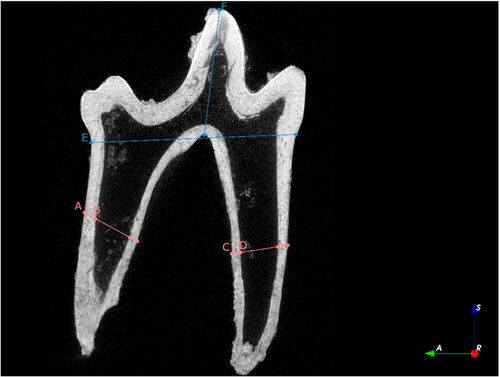
Table 1. Cuspal enamel thickness categories following Crossley (Citation1995).
Table 2. Age ranges and corresponding categories developed for the purposes of the present study, adapted from Nomokonova et al. Citation2020. In domestic dogs, canines erupt between four and six months, while mandibular M1 crowns erupting at five to seven months of age (Hale Citation2005; Lobprise and Dodd Citation2019). Note that specimens classified as ‘juveniles’ constitute permanent teeth with fully-developed roots, but are estimated to be under 12 months in age.
Figure 4. Bivariate plot of pulp cavity closure ratio to enamel thickness for the Moxviquil and Tenam Puente specimens. A linear trendline for the maxillary canine specimens is shown. The three specimens encircled in orange represent likely juvenile specimens from Moxviquil with unusually low pulp cavity closure ratios and unusually thin enamel.
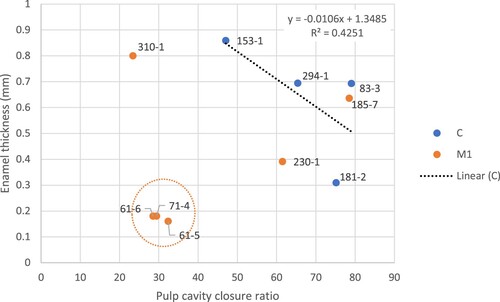
Figure 5. Linear regression of maxillary canine pulp cavity closure ratios to age in months of Moxviquil and Tenam Puente specimens.

Figure 6. Linear regression of mandibular canine pulp cavity closure ratios to age in months of Moxviquil and Tenam Puente specimens.
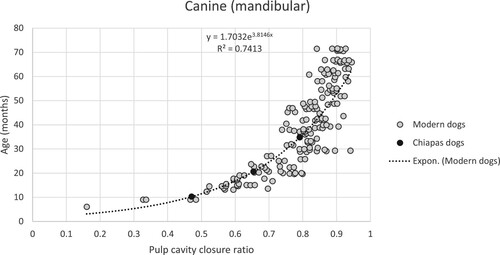
Figure 7. Linear regression of the mesial root of mandibular first molar pulp cavity closure ratios to age in months of Moxviquil and Tenam Puente specimens.

Figure 8. Linear regression of the distal root of mandibular first molar pulp cavity closure ratios to age in months of Moxviquil and Tenam Puente specimens.
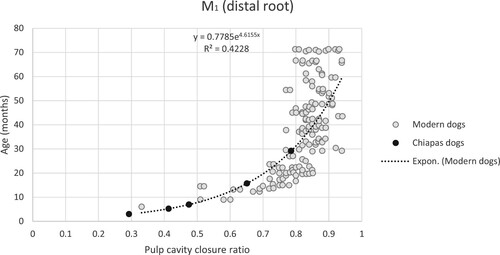
Table 3. Pulp cavity closure ratios and enamel thickness measurements for Moxviquil (PIERACH) and Tenam Puente (RETP) dogs with associated age-at-death. Pulp cavity ratios were calculated using the methods illustrated in and , while enamel thickness was calculated using the methods illustrated in . Pulp cavity age estimates were calculated using the regression equations calculated from Nomokonova et al. Citation2020: Figures 4–7. Cuspal enamel thickness categories follow Crossley Citation1995 (see ). Age categories are assigned by categories outlined in .

